Brain-Boosting Activities to Develop 5 Year Olds
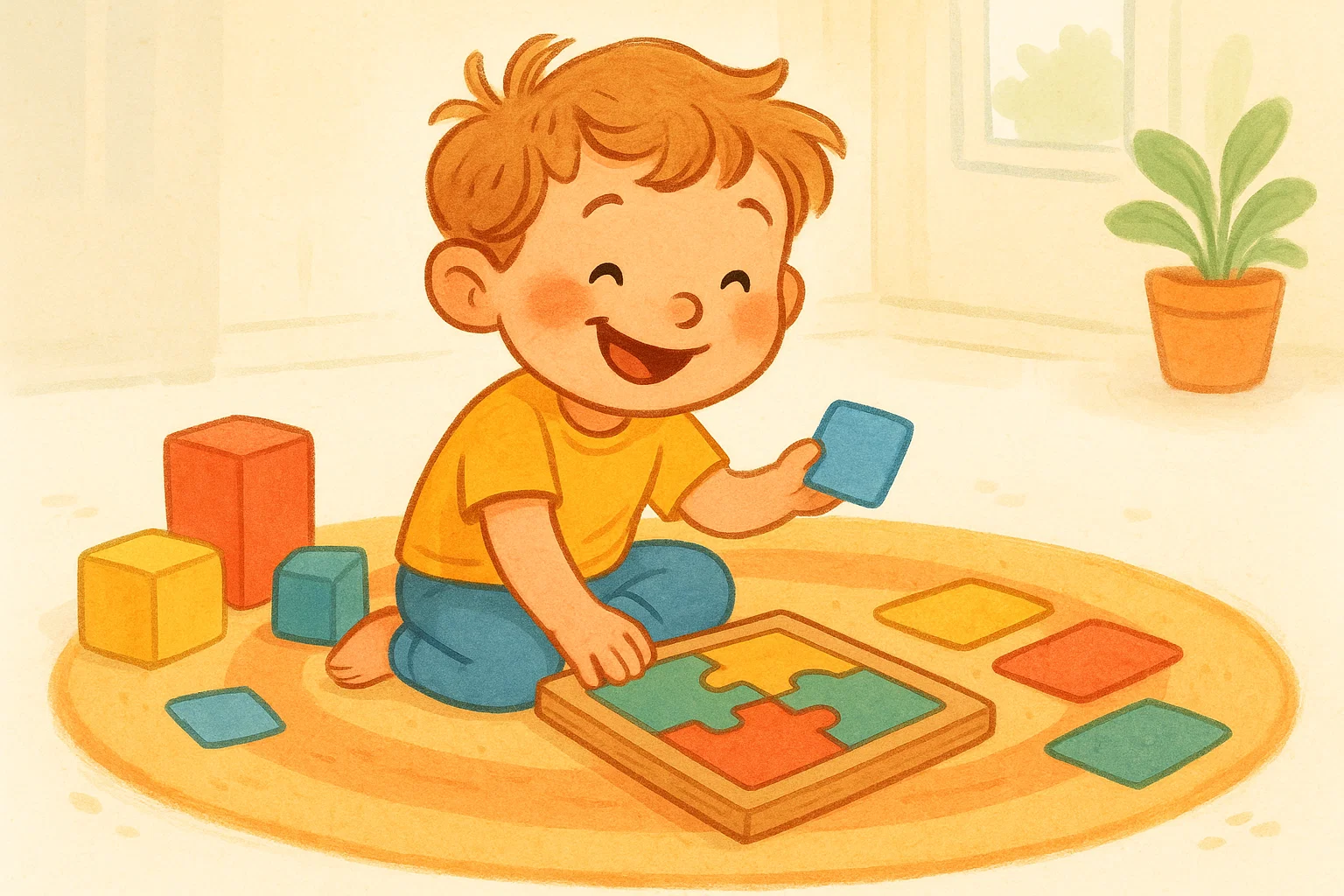
The years between ages 3 and 5 represent a critical window for brain development. During this time, your child’s brain forms over one million neural connections every second. The games and activities you introduce now can shape how your little one thinks, learns, and interacts with the world for years to come.
When you engage your child in purposeful play, you’re not just keeping them busy—you’re building the foundation for their future learning, behavior, and health.
This guide explores age-appropriate activities to help your preschooler develop essential cognitive, motor, and social skills. Each activity has been selected based on developmental milestones typical for 4-year-olds and 5-year-olds preparing for kindergarten.
Importance of Brain Development Games for 5 Year Olds
Brain development games do more than entertain. They create opportunities for children to practice skills they’ll need throughout life. At this early age, playful learning activities strengthen neural pathways that support everything from problem-solving to emotional regulation.
Boosting Child Speech Development
Language development accelerates dramatically during the preschool years. Between ages 3 and 5, most children expand their vocabulary from about 1,000 words to over 2,500 words. Games that encourage conversation, storytelling, and asking questions help your child build this verbal foundation.
Activities that promote early language skills include:
- Naming games that expand vocabulary
- Rhyming activities that develop phonological awareness
- Story sequencing that teaches narrative structure
- Question-and-answer games that encourage dialogue
When you take turns during these activities, you model the back-and-forth rhythm of conversation. This helps the child understand communication as a two-way exchange, which is essential for social development.
Activities to Prepare Your Child for Kindergarten
Kindergarten readiness involves more than academic skills. Your child needs to follow multi-step directions, work independently for short periods, and transition between activities. Games that build these executive function skills will ease the adjustment to formal schooling.
The table below outlines key kindergarten readiness skills and corresponding activities:
| Skill Area | What Kindergarten Expects | Supporting Activities |
| Attention & Focus | Sitting still for 15-20 minutes | Board games, puzzle completion, listening to stories |
| Following Directions | Completing 2-3 step instructions | Simon Says, cooking together, cleanup routines |
| Social Skills | Sharing, taking turns, cooperative play | Group games, pretend play with peers, team activities |
| Self-Regulation | Managing emotions, waiting patiently | Breathing exercises, patience-building games, calm-down strategies |
Boosting Emotional and Social Growth
Games also help children learn to navigate their feelings and relationships. When preschoolers play together, they practice empathy, cooperation, and conflict resolution. These experiences teach your child how to recognize emotions in themselves and others.
Cooperative games—where players work together toward a common goal rather than competing—can be particularly valuable. They reduce frustration and build a sense of teamwork. Games involving turn-taking also teach patience and help children understand delayed gratification.
Essential Supplies for Preschool-Aged Children
You don’t need expensive equipment to support brain development. Many effective activities use everyday household items. Here’s what helps:
Basic supplies for brain-boosting activities:
- Crayons, markers, and finger paint for creative expression
- Building blocks and construction toys for spatial reasoning
- Age-appropriate puzzles (12-20 pieces for most 4-year-olds)
- Board games designed for preschoolers
- Books at various reading levels
- Playdough or clay for sensory exploration
- Outdoor equipment like balls and climbing structures
The most important resource you can provide is your time and attention. When you play alongside your child, you create opportunities for learning that no toy alone can replicate.
Cognitive Brain-Boosting Games
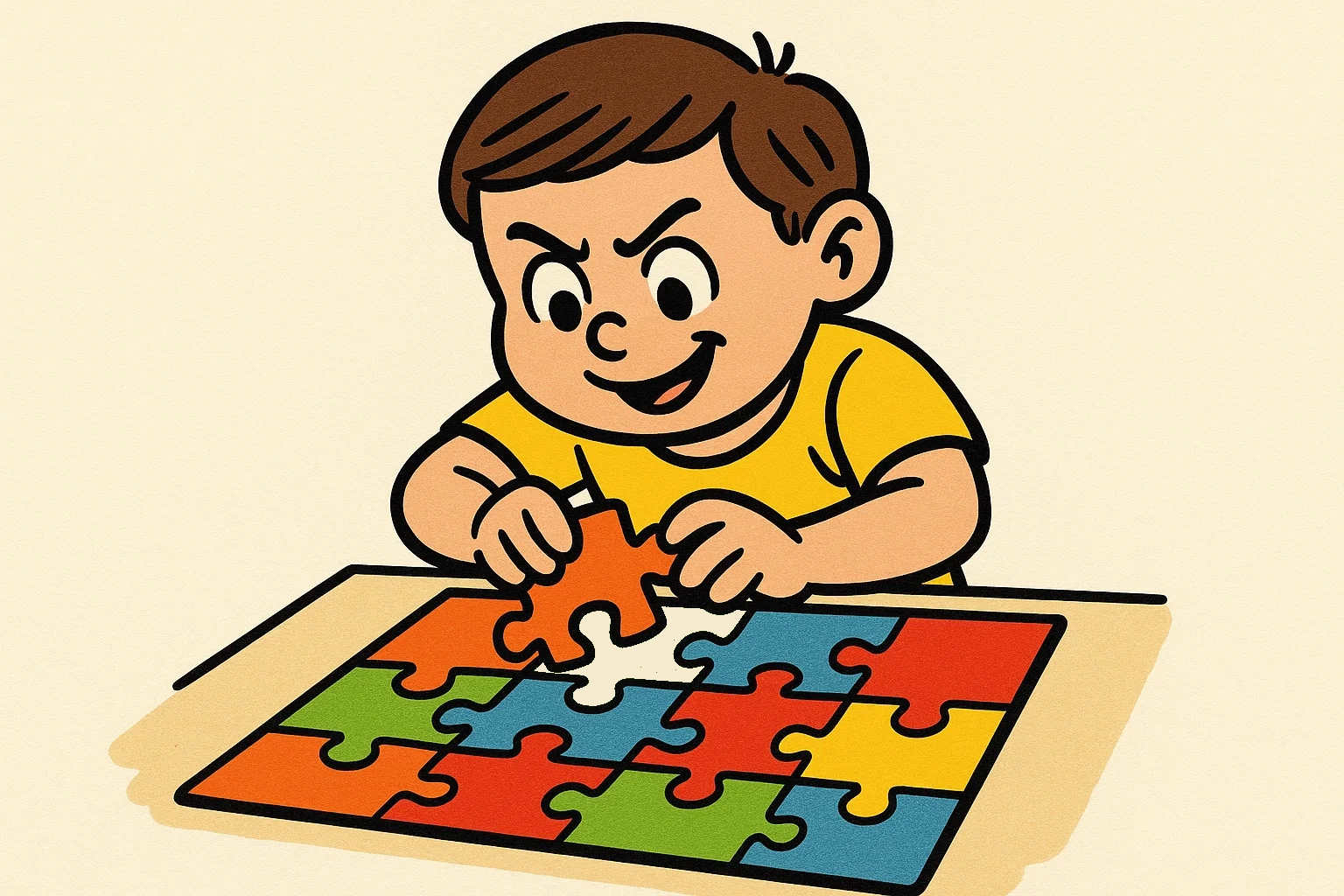
Cognitive development during the preschool years includes improvements in memory, attention, problem-solving, and logical thinking. The following activities engage these developing skills in ways that feel like play.
Putting Together a Jigsaw Puzzle
Jigsaw puzzles offer remarkable benefits for young children. When your 4-year-old works on a puzzle, they’re practicing visual-spatial reasoning—the ability to understand how shapes relate to each other in space. This skill is foundational for math, science, and even reading.
Puzzles also support concentration and persistence. As your child searches for the right piece, they learn to stay focused on a goal. The satisfaction of completing a puzzle reinforces the value of working through challenges.
How to maximize puzzle benefits:
- Start with 12-15 piece puzzles and gradually increase complexity
- Choose puzzles with familiar images that interest your child
- Work together initially, then encourage independent completion
- Talk about strategies: “Let’s find all the edge pieces first”
- Display completed puzzles to celebrate the accomplishment
Research published in APA PsycNet suggests that children who regularly engage with puzzles show stronger spatial transformation skills, which correlate with later success in STEM fields.
Memory Games for Kids
Memory games exercise working memory—the ability to hold and manipulate information in your mind. This cognitive function is crucial for following instructions, solving problems, and learning new concepts.
Classic memory matching games, where players flip cards to find pairs, are excellent for preschoolers. You can also play verbal memory games: “I went to the market and bought apples… I went to the market and bought apples and bananas…”
These games help kids improve memory while having fun. As your child practices, you’ll likely notice they can remember more items and recall information more quickly. This isn’t just about memorization—it’s about building the mental muscle that supports all learning.
Solving Mazes to Boost Logic
Mazes teach children to plan ahead and think through consequences. When your little one traces a path through a maze, they’re practicing reasoning skills and learning to evaluate different options before committing to a choice.
Start with simple mazes that have obvious paths. As your child’s skills develop, introduce more complex designs with dead ends and multiple routes. This progression naturally challenges their thinking without overwhelming them.
Mazes also develop fine motor skills as children use pencils or crayons to trace pathways. The combination of cognitive challenge and physical coordination makes maze activities particularly valuable.
Puzzle Games: Spot the Difference
“Spot the difference” puzzles train visual discrimination and attention to detail. Your child must carefully observe two similar images and identify subtle variations between them. This careful looking strengthens concentration and observational skills.
These activities also build patience, as finding all the differences requires sustained attention. You can make the game more engaging by taking turns pointing out differences or by creating your own spot-the-difference challenges with photographs or drawings.
“Uncover the Tray” Brain Development Activity
This simple activity powerfully develops visual memory. Place several small objects on a tray, let your child observe them for 30 seconds, then cover the tray and ask them to recall what they saw.
Variations to increase difficulty:
- Start with 5-6 objects, gradually adding more
- Remove one object and ask what’s missing
- Change the position of objects
- Use objects from specific categories (all animals, all foods)
The uncover tray game helps the child practice encoding visual information into memory and then retrieving it—fundamental cognitive processes that support academic learning.
Boosting Language and Literacy Activities
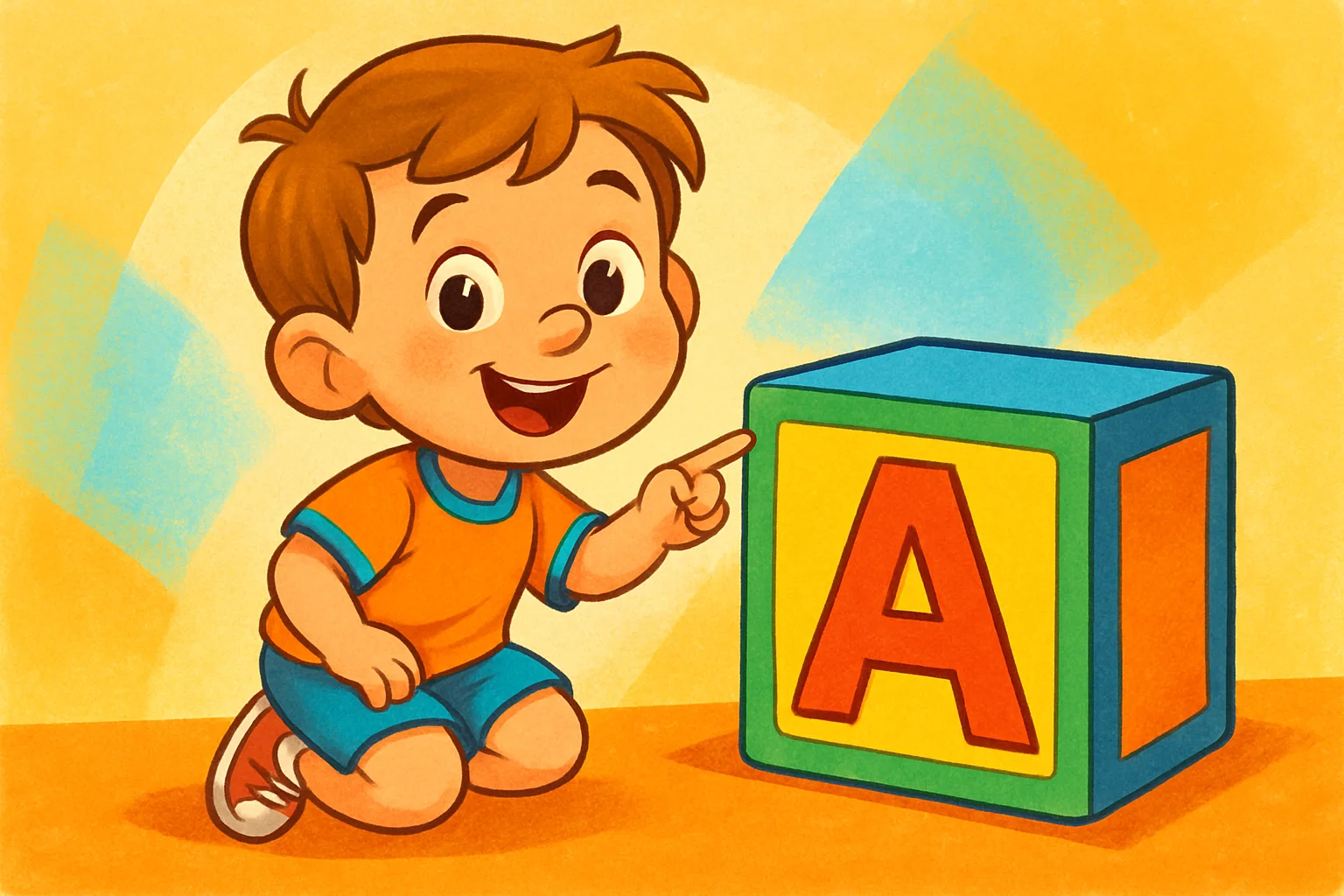
Strong language skills are the foundation for reading, writing, and communication. The preschool years are an optimal time to build vocabulary, phonological awareness, and a love of words.
“Letter Rapid Fire” Fun Activity
Letter recognition is a key milestone in early literacy. Make learning letters active and exciting by playing rapid-fire identification games. Point to letters in books, on signs, or on magnetic tiles and ask your child to name them as quickly as they can.
This game activates quick thinking and makes letter practice feel energetic rather than tedious. You can reverse the game too: call out a letter and have your child find it as fast as possible. This variation adds a physical element that many preschoolers find particularly engaging.
Going on a Letter Hunt
Transform your home or neighborhood into a literacy treasure hunt. Choose a “letter of the day” and challenge your child to find that letter everywhere—on cereal boxes, street signs, clothing tags, and book covers.
This activity helps children recognize that letters appear in everyday contexts, not just in formal learning situations. It builds letter recognition while also encouraging observation skills and curiosity about the written world.
Letter hunts can happen anywhere: at the grocery store, on a walk, or even during bath time using foam letters. The variety keeps the activity fresh and reinforces that reading is relevant to daily life.
Building Vocabulary Activities for Kids
A rich vocabulary supports reading comprehension, self-expression, and academic success. Research published on Sage Journals indicates that children from language-rich environments may hear 30 million more words by age 3 than children from less verbal households.
Effective vocabulary-building strategies:
- Introduce new words during everyday activities: “Let’s scrub these dishes with the bristly brush”
- Explain word meanings in context: “Enormous means really, really big”
- Encourage your child to use new words in sentences
- Play synonym games: “What’s another word for happy?”
- Read books slightly above your child’s current level
The goal isn’t to drill vocabulary but to create a language-rich environment where children learn words naturally through exposure and use.
Word Search Puzzles
Simple word searches designed for young children typically ask them to find their name, family members’ names, or basic sight words within a grid of letters. This activity combines letter recognition with visual scanning.
Even if your preschooler can’t read independently yet, you can point to words together and talk about the letters that form them. This builds understanding of how letters combine to create words—a foundational concept in learning to read.
Reading for Brain Development
Regular reading time offers benefits that extend far beyond language development. When you read together, you expose your child to new concepts, cultures, and ways of thinking. You also model that reading is enjoyable and valuable.
According to the American Academy of Pediatrics, daily reading starting in infancy supports early language and literacy development, parent-child relationships, and school readiness. For preschoolers, aim for at least 15-20 minutes of shared reading daily.
Making reading time more interactive:
- Ask questions about the story: “Why do you think the character did that?”
- Encourage predictions: “What do you think will happen next?”
- Connect stories to your child’s experiences: “Remember when we visited the beach like in this book?”
- Let your child tell parts of familiar stories
- Follow your child’s interests when choosing books
Quality matters more than quantity. Even 15 minutes of engaged, interactive reading creates more learning opportunities than 30 minutes of distracted page-turning.
Motor and Sensory Skill Activities for Kids
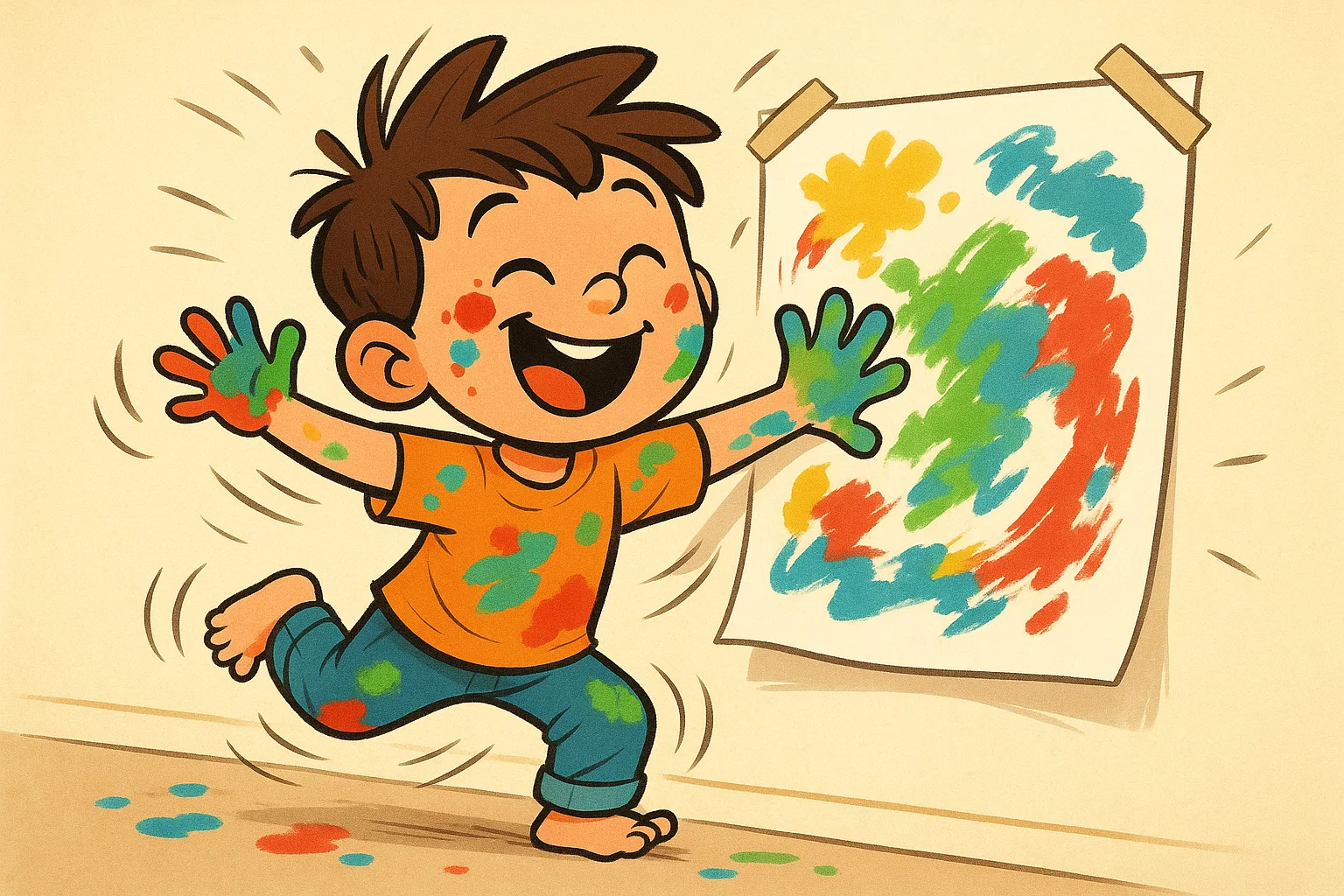
Physical development and cognitive development are deeply connected. Activities that involve movement help build neural pathways while also strengthening muscles and coordination.
Finger Painting and Messy Play
Finger painting offers rich sensory stimulation that supports brain development. When children squish paint between their fingers, they’re processing tactile information and developing fine motor skills simultaneously.
This messy play also encourages creativity and self-expression. Without the constraint of holding a brush correctly, young children can focus on creating and exploring color mixing, patterns, and textures.
Benefits of painting activities:
- Strengthens hand muscles needed for writing
- Develops hand-eye coordination
- Encourages experimentation and creative thinking
- Provides calming sensory input
- Builds understanding of cause and effect
Yes, finger painting creates cleanup work. But the developmental benefits make the temporary mess worthwhile. Protect surfaces with newspapers or work outside when weather permits.
Games for Kids Involving Hand Movements
Games that require precise hand movements strengthen the fine motor skills essential for writing, buttoning clothes, and using utensils. Activities like threading beads, using tweezers to move small objects, or playing with playdough all build hand strength and coordination.
Action songs with hand movements—like “Itsy Bitsy Spider” or “Wheels on the Bus”—combine motor practice with rhythm and language learning. The multisensory nature of these activities helps the child remember and reinforces multiple skill areas simultaneously.
Making a Mess (Sensory Play)
Structured sensory play provides crucial developmental benefits. Activities like playing with sand, water, rice, or playdough give children opportunities to explore textures, experiment with materials, and engage their senses.
This type of play supports scientific thinking as children naturally test hypotheses: “What happens if I add more water?” “Can I build this higher?” The open-ended nature of sensory play also encourages problem-solving and persistence.
Sensory activities can have calming effects, particularly for children who become easily overwhelmed. The focused, repetitive motions involved in sensory play may help regulate emotions and reduce stress.
Exploring Through Climbing
Gross motor skills develop through activities that use large muscle groups. Climbing structures, monkey bars, and outdoor play equipment help children develop strength, balance, and spatial awareness.
When your child climbs, they’re also learning to assess risk and build confidence in their physical abilities. The proprioceptive feedback—awareness of body position in space—gained through climbing supports overall coordination and body awareness.
Safe climbing opportunities don’t require expensive equipment. Parks offer public access to climbing structures, or you can create simple obstacles at home using cushions, sturdy furniture, and supervision.
Splish Splash! Learning Through Water Play
Water play captivates most preschoolers while offering numerous learning opportunities. Pouring water between containers teaches concepts like volume, empty and full, and cause and effect. Floating and sinking experiments introduce basic physics.
Beyond cognitive benefits, water play develops hand-eye coordination and fine motor control. Squeezing sponges, using spray bottles, or pouring from small pitchers all strengthen hand muscles.
Water play can happen in bathtubs, water tables, sinks with supervision, or outdoors with buckets and containers. The sensory experience of water is naturally soothing for many children.
Math and Logic Games for 5-Year-Olds
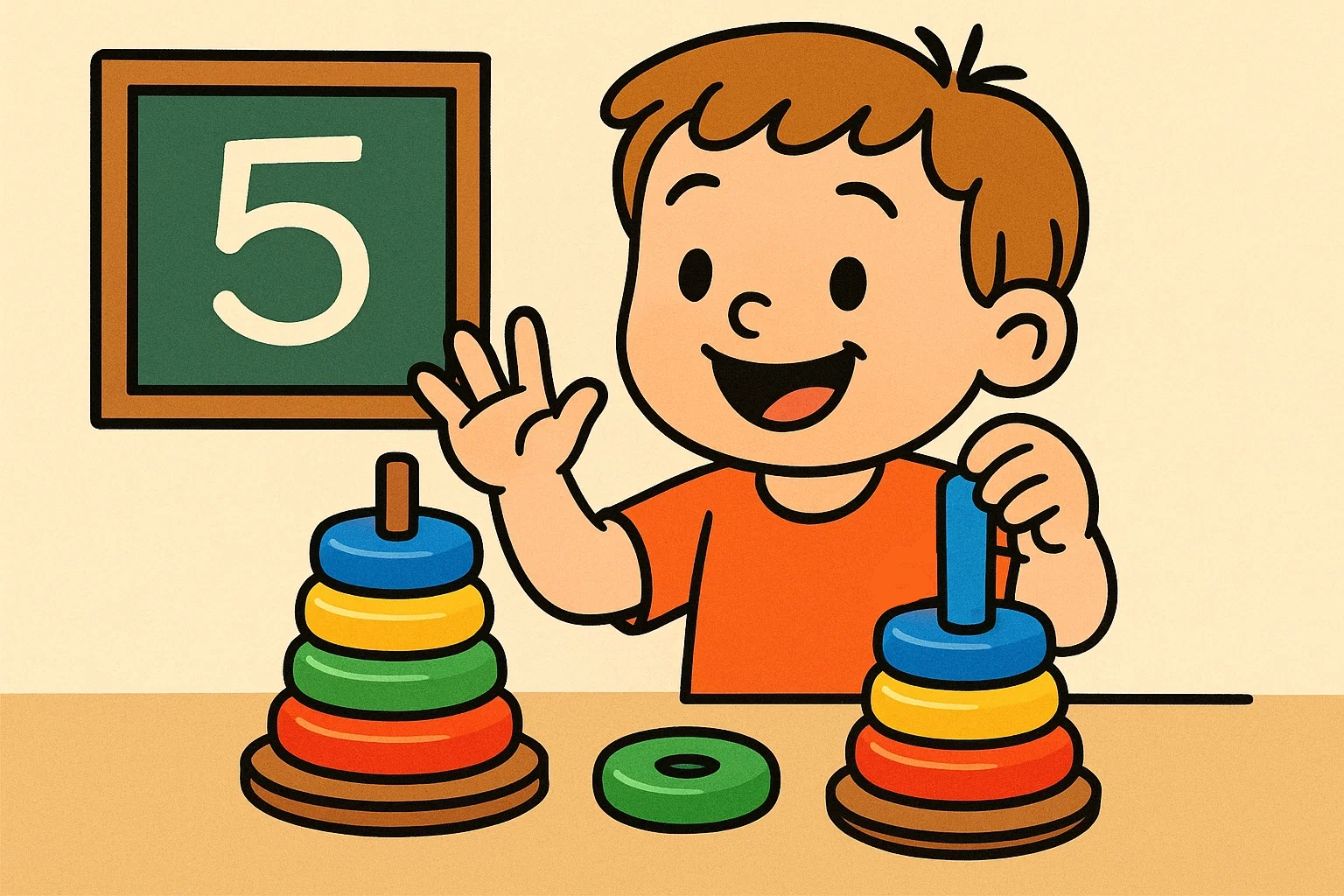
Mathematical thinking begins long before formal arithmetic. Preschool activities that introduce counting, patterns, shapes, and spatial relationships build the foundation for later math success.
Brain-Boosting Math Activities
Young children are natural mathematicians. They sort, compare, notice patterns, and explore shapes during everyday play. You can enhance these natural tendencies by introducing games that make mathematical thinking explicit.
Activities that count as math for preschoolers include:
- Sorting objects by color, size, or category
- Creating and extending patterns (red block, blue block, red block…)
- Comparing quantities (more, less, same)
- Identifying shapes in the environment
- Measuring ingredients while cooking
These experiences help children develop number sense—an intuitive understanding of quantities and relationships that supports all future math learning.
Counting Practice
Regular counting practice helps children understand that numbers represent quantities. Count everything: stairs as you climb them, crackers at snack time, cars that pass by, toys as you put them away.
Effective counting activities:
- Count forwards and backwards
- Count by specific numbers (every other stair, every two blocks)
- Match written numerals to quantities
- Practice one-to-one correspondence (touching each object once while counting)
By age 5, most children can count to 20 or higher and understand that the last number they say represents the total quantity. This conceptual understanding develops through repeated, meaningful counting experiences.
Strategy Games for Kids (e.g., Jenga, Snakes & Ladders)
Board games teach children to follow rules, take turns, and plan ahead. Games like Snakes and Ladders introduce number recognition and counting. Jenga develops patience, coordination, and strategic thinking as players carefully remove blocks without toppling the tower.
These games also help kids learn to manage emotions. Winning and losing are part of gameplay, and experiencing both outcomes in low-stakes situations teaches resilience and good sportsmanship.
The social aspect of board games is equally valuable. Playing together builds family connections and provides natural opportunities to practice conversation, cooperation, and problem-solving.
“I Spy” for Development
“I Spy” is deceptively educational. This simple game builds vocabulary, descriptive language, and observation skills. When you play, you’re teaching your child to notice details and use language to describe what they see.
Mathematical variations add additional learning: “I spy something shaped like a circle” or “I spy three things that are the same.” These versions introduce geometric shapes and counting in a playful context.
The beauty of I Spy is its flexibility. You can play anywhere—in the car, during meals, at the park—making it an ideal activity for filling transition times or keeping restless preschoolers engaged.
Creative and Imaginative Play Activities for Kids
Pretend play is the work of childhood. Through imaginative scenarios, children process experiences, practice social roles, and develop abstract thinking.
Pretend Play for Brain Development
When your child pretends to be a doctor, shopkeeper, or superhero, they’re engaging in sophisticated cognitive work. Pretend play requires holding two realities in mind simultaneously: knowing that a block is a block while also treating it as a phone.
This type of play develops executive function skills including working memory, flexible thinking, and self-control. Children must remember the rules of their imaginary scenario, adapt to changes in the play, and regulate their behavior to fit their chosen role.
Ways to support pretend play:
- Provide simple props (scarves, boxes, household items)
- Create themed play areas (kitchen corner, doctor’s office)
- Join the play when invited, following your child’s lead
- Avoid directing the play; let imagination drive the scenario
- Offer open-ended toys that can become anything
Research published on frontiers suggests that children who engage in more pretend play show better self-regulation and social skills. The thinking skills practiced during pretend play transfer to other areas of learning.
Story Time Drama
Acting out stories combines literacy with imaginative play. After reading a book together, invite your child to retell the story through drama. They can act out different characters while you narrate, or you can act together.
This activity helps the child understand story structure (beginning, middle, end) and character motivation. It makes abstract narrative concepts concrete and memorable. Story drama also builds confidence in self-expression and public speaking.
You don’t need costumes or scripts. Simple movement and imagination are enough. The focus should be on creative expression and story comprehension, not performance quality.
Guessing Games to Boost Creativity
Games like “20 Questions” or “What Am I?” encourage creative thinking and deductive reasoning. Your child must generate questions, consider information, and make logical guesses based on clues.
These games also help children learn to ask effective questions. Through trial and error, they discover that specific questions (“Is it an animal?”) provide more useful information than vague ones (“Is it good?”).
Guessing games develop patience as children must wait for clues before making conclusions. They also practice persistence when initial guesses are incorrect.
The Map Maker Activity
Invite your child to create maps of familiar spaces—your home, their bedroom, or the route to a favorite park. This activity develops spatial reasoning and symbolic thinking as they represent three-dimensional spaces on flat paper.
Map-making teaches children that symbols can represent real objects and places. This understanding is foundational for reading (letters symbolize sounds) and mathematics (numerals represent quantities).
Map-making activities for preschoolers:
- Draw simple floor plans of rooms
- Create treasure maps with landmarks
- Map the route of daily routines (bedroom to kitchen to car)
- Use blocks or toys to build 3D maps
Don’t worry about accuracy. The goal is to engage spatial thinking, not create precise representations. Your child’s messy, creative map is developmentally perfect.
